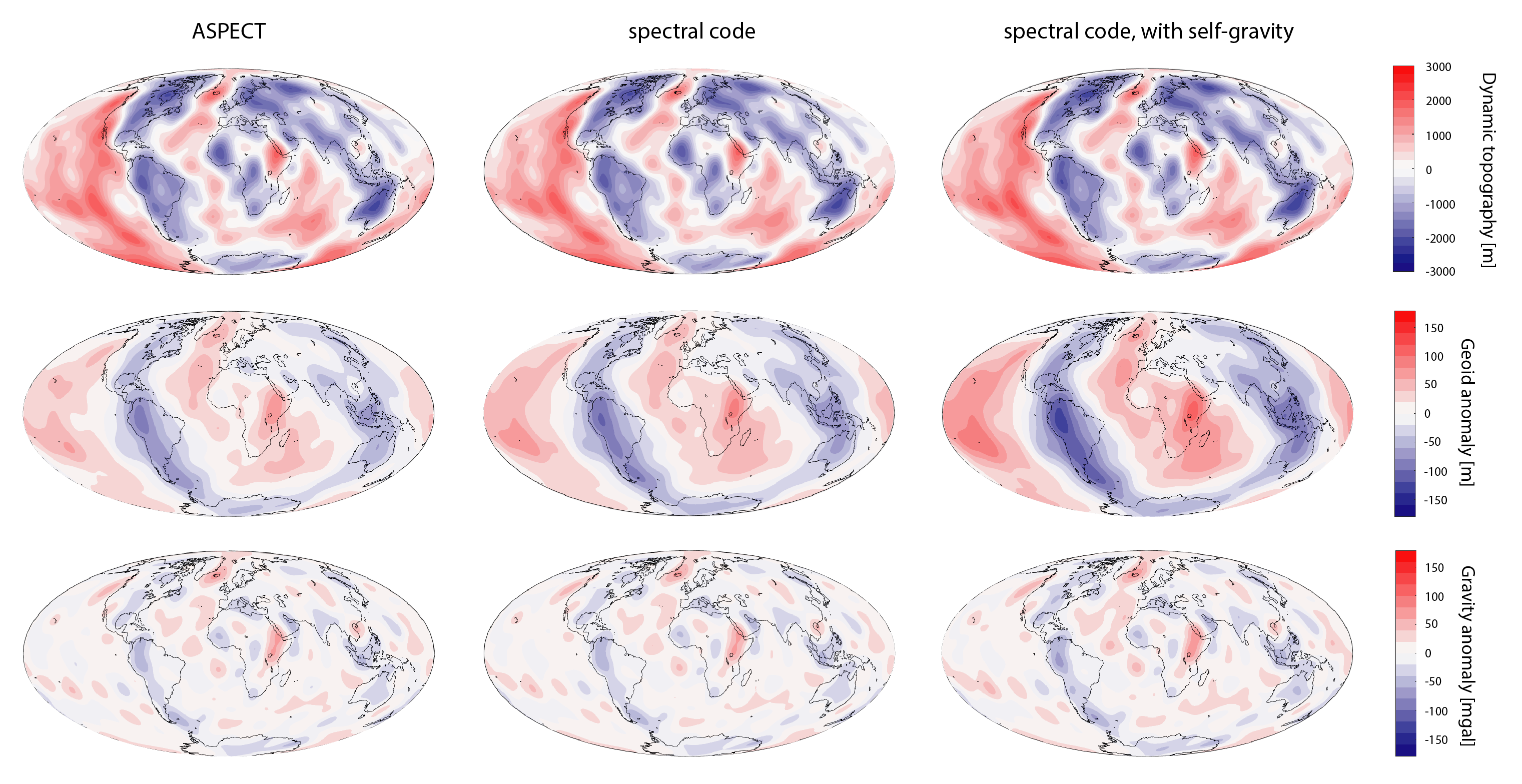Geoid Spectral Comparison
Geoid Spectral Comparison#
This folder contains a comparison between results from ASPECT and a spectral code. The latter is an instantaneous flow code (formulation from Corrieu et al., 1995; code by Sia Ghelichkhan at LMU Munich; calculations done by Mark Hoggard at Harvard University). This comparison was done in 2018. The setup for the run is:
Generate density field using S20RTS Vs % variations, scaled to density % variations using constant factor of 0.15, and converted into absolute density variations using constant 3300 kg/m3.
Run instantaneous flow with compressibility turned off, the value of g is set to constant 10.0 m/s2, background density = 3300 kg/m3, core density = 9900 kg/m3, surface fluid density = 0 kg/m3.
Runs are done without self-gravitation, i.e. the delta g x rho term in the momentum equation is omitted (e.g. see eqn. 25 of Forte, 2007 and shown in terms (6,3) and (5,4) in propagator matrix A of Corrieu et al, 1995).

Fig. 207 Dynamic topography (top), geoid (middle), and gravity (bottom) anomalies computed with ASPECT (left), spectral code (middle), spectral code with self-gravity (right).#
See spectral-comparison.prm for the ASPECT input file. The resulting dynamic topography, geoid, and gravity anomalies show good agreement (see Fig. 207). Spectral runs with self-gravitation are also shown (this is not yet an option in ASPECT).

